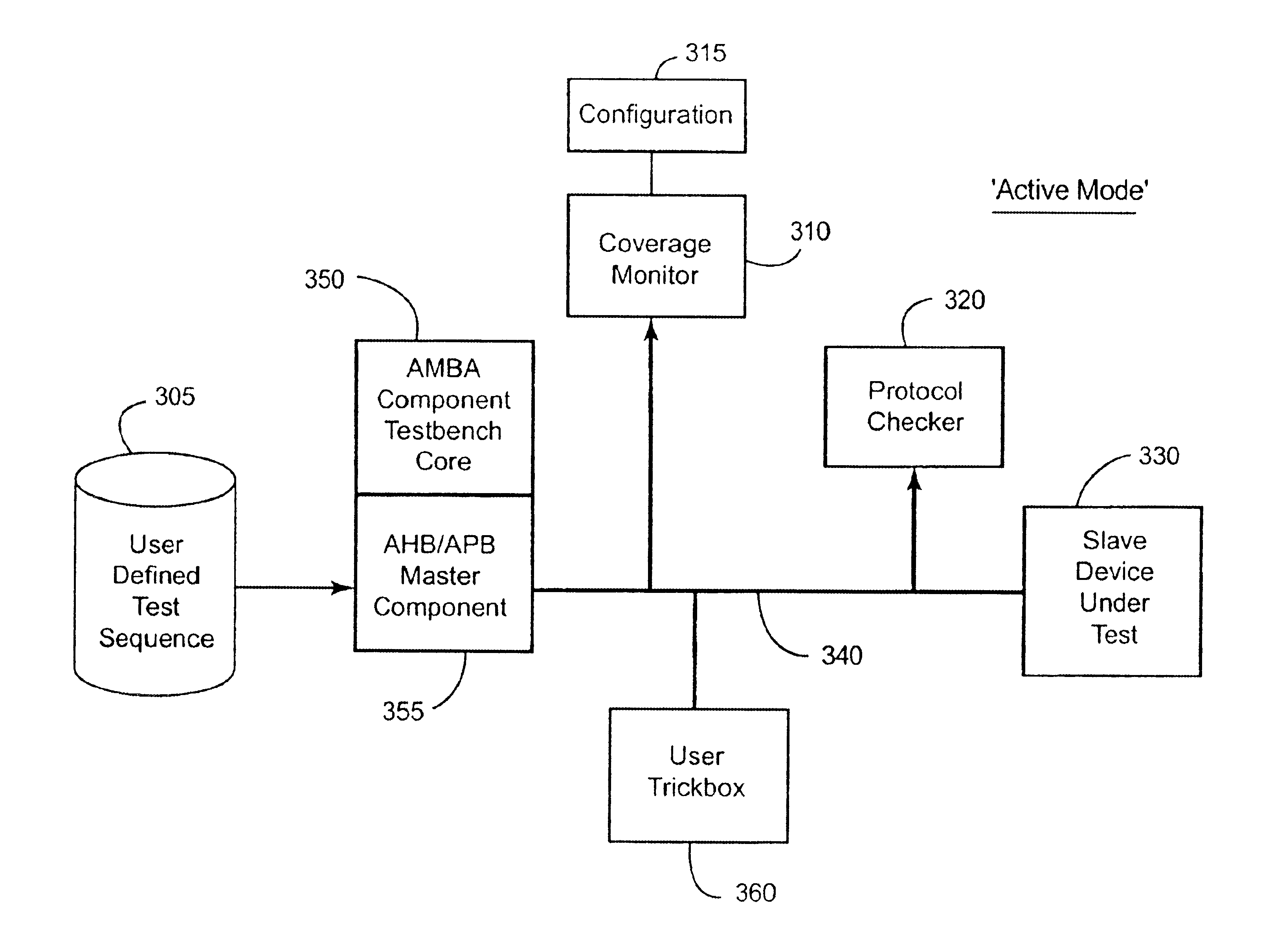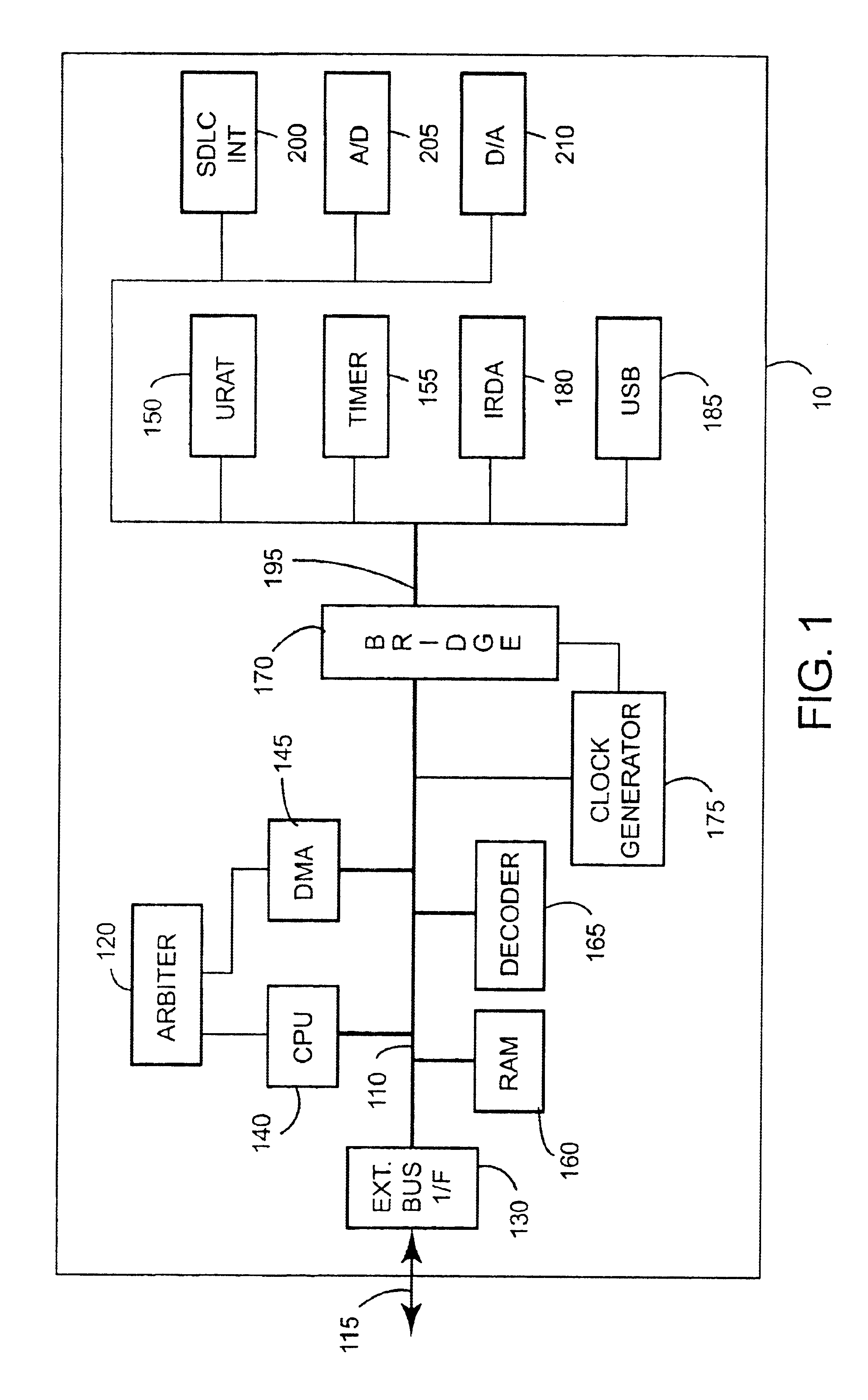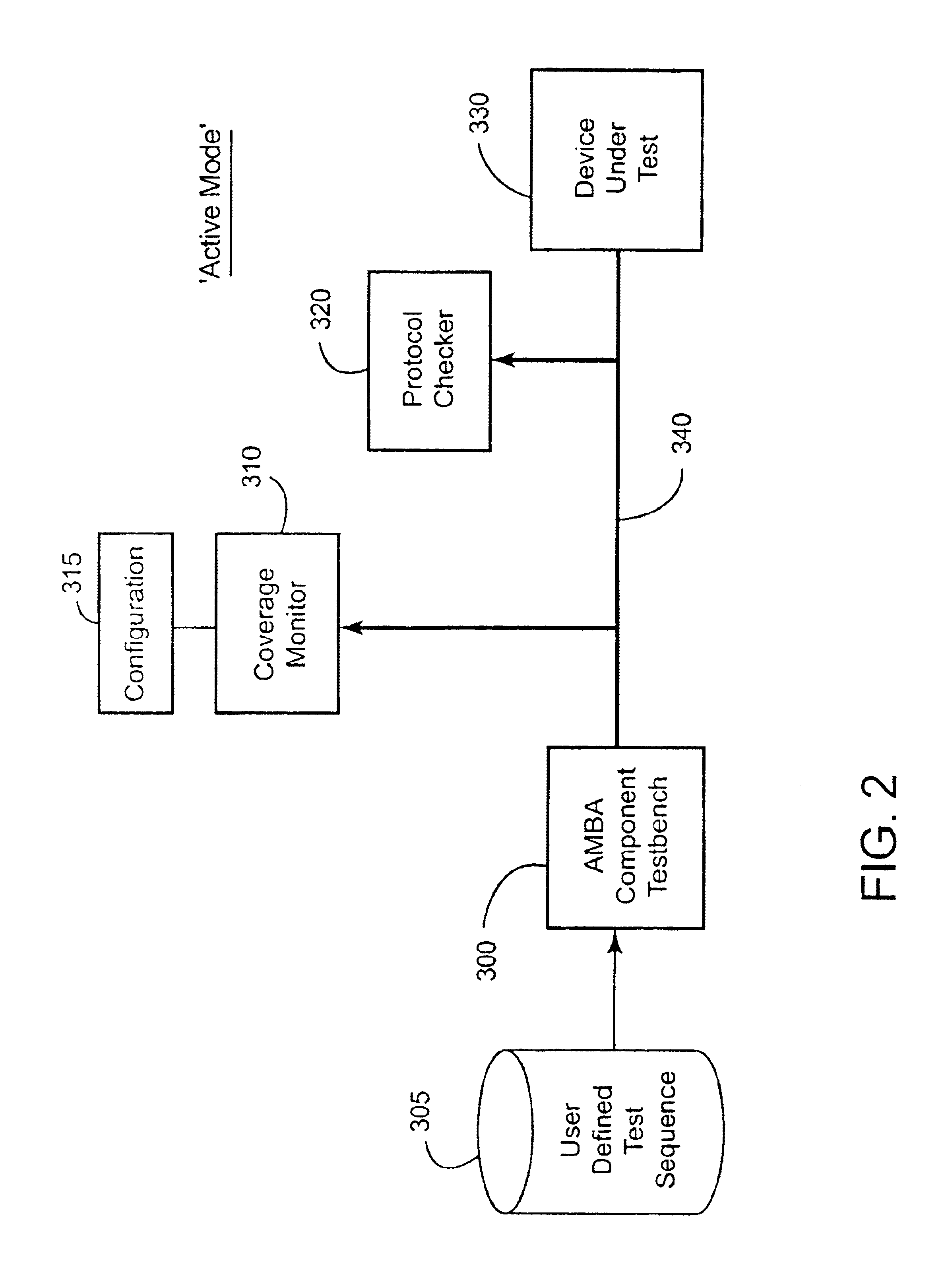Testing compliance of a device with a bus protocol
a technology of bus protocol and device, applied in the direction of transmission, instruments, electric digital data processing, etc., can solve the problems of time-consuming and labor-intensive process of testing a specific master device or slave device, or a combination of master and slave device, and can be very costly to perform the test procedure on the componen
- Summary
- Abstract
- Description
- Claims
- Application Information
AI Technical Summary
Benefits of technology
Problems solved by technology
Method used
Image
Examples
Embodiment Construction
agram illustrating more detail of the logical elements used in the active mode of preferred embodiments when testing a slave device;
[0044]FIG. 4 is a block diagram illustrating more detail of the logical elements used in an active mode of preferred embodiments when testing a master device;
[0045]FIG. 5 is a block diagram schematically illustrating the logical elements used when performing testing in accordance with a passive mode of preferred embodiments of the present invention;
[0046]FIG. 6 is a flow diagram illustrating the steps performed to execute a compliance check in accordance with preferred embodiments of the present invention;
[0047]FIG. 7 is a block diagram illustrating in more detail the process of generating a compliance test environment for the device under test;
[0048]FIG. 8 is an example graphical notation used to represent evaluation of temporal sequences when performing protocol checking in accordance with preferred embodiments of the present invention;
[0049]FIGS. 9A ...
PUM
 Login to View More
Login to View More Abstract
Description
Claims
Application Information
 Login to View More
Login to View More - R&D
- Intellectual Property
- Life Sciences
- Materials
- Tech Scout
- Unparalleled Data Quality
- Higher Quality Content
- 60% Fewer Hallucinations
Browse by: Latest US Patents, China's latest patents, Technical Efficacy Thesaurus, Application Domain, Technology Topic, Popular Technical Reports.
© 2025 PatSnap. All rights reserved.Legal|Privacy policy|Modern Slavery Act Transparency Statement|Sitemap|About US| Contact US: help@patsnap.com



